BOULDER, Colorado — Asteroid experts are pondering the scientific output from the NASA Lucy spacecraft after it shot by its celestial destination — the main belt asteroid named Donaldjohanson.
Here at the Southwest Research Institute (SwRI), lead organization for the Lucy mission, Hal Levison, principal investigator of the Lucy mission, said the spacecraft flyby of Donaldjohanson yielded a host of "don't know" factors about the object.
As for its shape, Levison said that Donaldjohanson and the other Lucy targets are providing hints about how planets formed. "These small body populations are really key to figuring that out," he told Space.com.
"That's the whole reason for the mission," Levison added, "they are fossils of what happened. Each one of these things is a little experiment." So piecing together the story of how planets accumulate, like assembling fossil bits here on Earth, he said, "that is what Lucy and the science team are trying to do."
Asteroid 52246 Donaldjohanson is named after American paleoanthropologist Donald Johanson who co-discovered the Lucy hominid fossil in northern Ethiopia in 1974.
Rock star hunt
Like a rock and roll band excursion, the Lucy spacecraft is on a celestial concert tour, a 4-billion-mile, 12-year, 11 asteroid sightseeing sojourn. Lucy was launched on October 16, 2021.
On April 20, the Lucy spacecraft shot by Donaldjohanson as a test run to the main event: visiting the never-before-explored Trojan asteroids in the Jupiter system.
"We are going to have five encounters with Trojans starting in April 2027, going to March 2, 2033. It'll be time for me to retire after that," Levison said. "The goal of Lucy is to study the diversity in these objects."
In November 2023, Lucy flew past the tiny main belt asteroid Dinkinesh, revealing unexpected discoveries; the main object hosts a contact binary satellite, now named Selam - two smaller objects touching each other.
"Dinkinesh is an amazing object in and of itself," said Levison and indeed a surprise.
To make progress in science, you collect pre-flyby data from ground and in-flight observations and start making assumptions, Levison said. "Sometimes you're right, sometimes you're wrong. With Dinkinesh we were wrong."
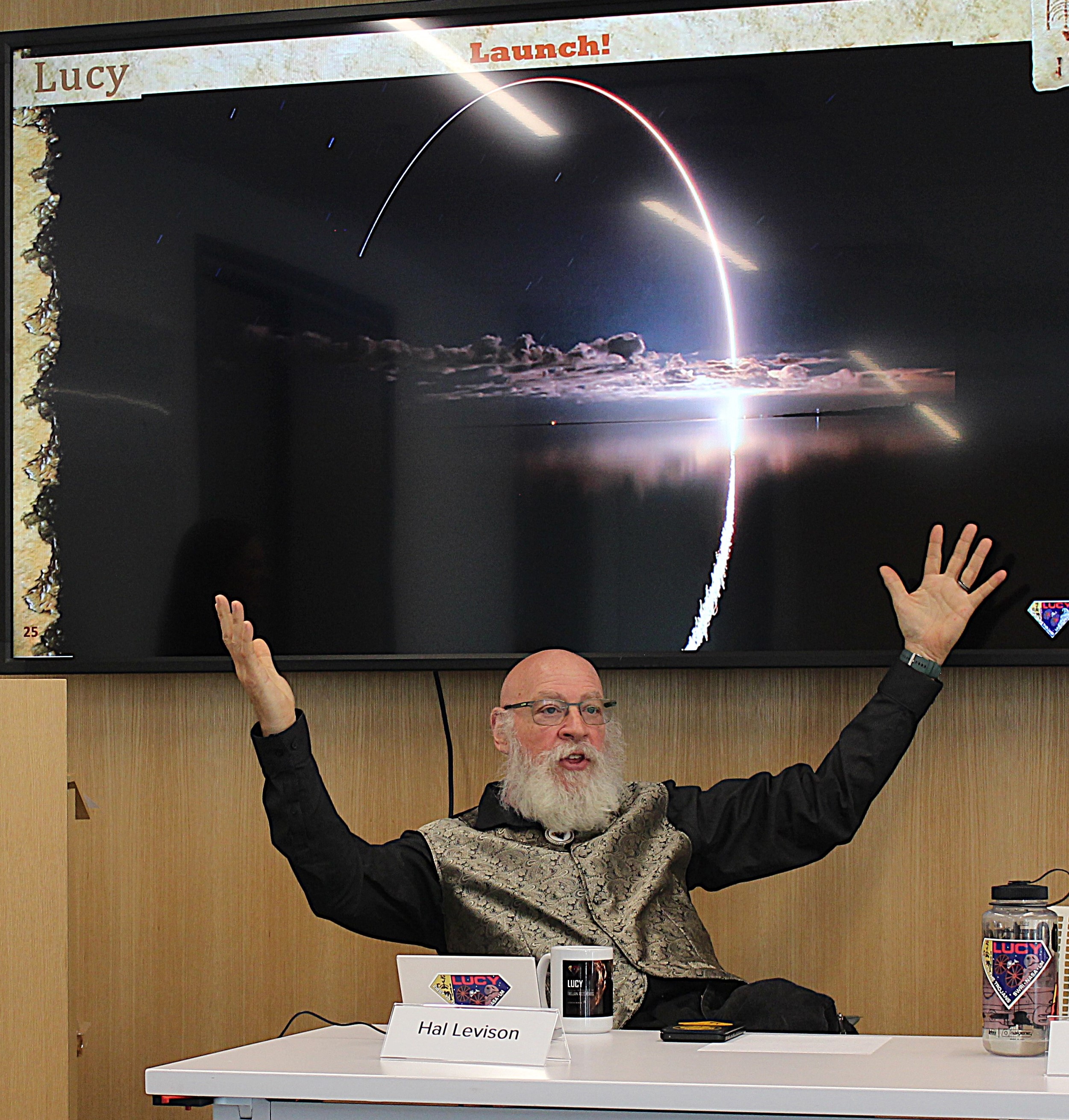
Fundamental finding?
With Lucy's latest asteroid encounter, Donaldjohanson was found to be what earlier observations foretold. Still, imagery and data collected by the probe's instruments are portraying some head-scratching puzzlement.
"Stay tuned," Levison said, not wanting to get ahead of the cadre of Lucy science team members who were busily at work within a basement site of SwRI.
"What this thing looks like are two ice cream cones put together. It's very weird. We don't know how it formed. It's going to turn out, I think, that this is going to teach us something very fundamental about how these things come together, when they collide," Levison said. "We're going to get a lot of really good science out of this."
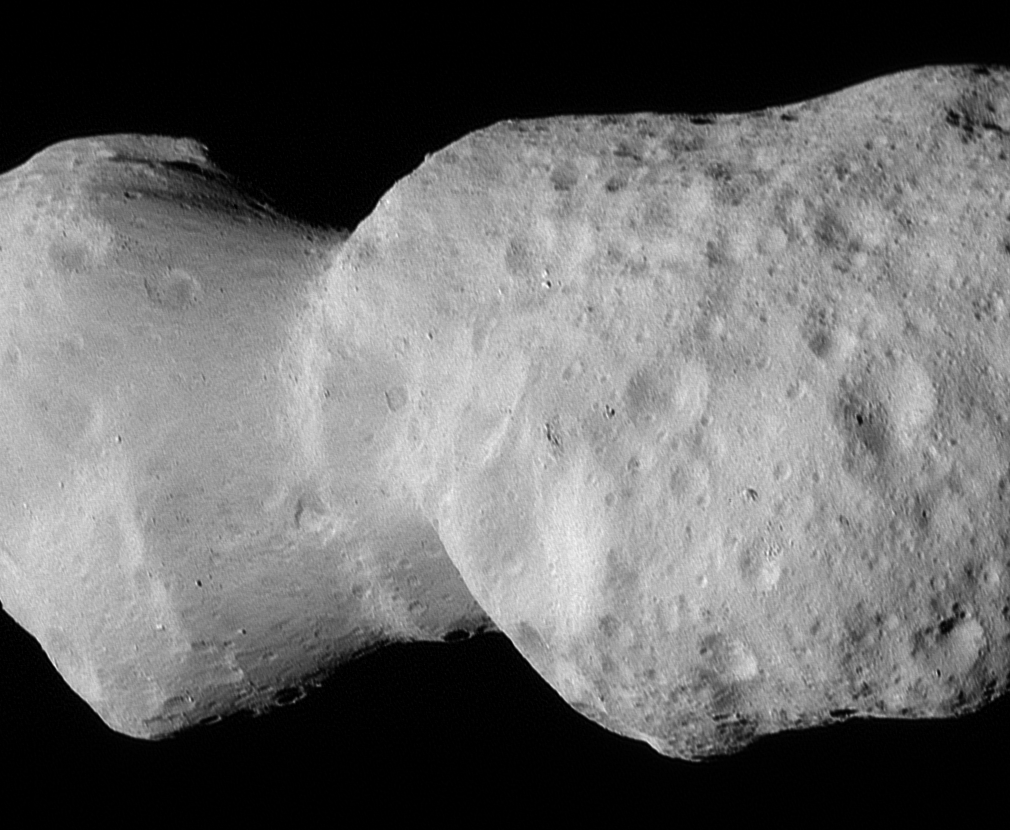
Stick together
Simone Marchi, Lucy deputy principal investigator at SwRI, said Donaldjohanson is a fragment of a collision. "We know that for sure. These are two objects that eventually came together in some way." The result is an object measuring 8 kilometers by 2.5 kilometers in size.
"There are different scenarios to think about," Marchi said, "and we have good data sets. The speed had to be very slow," akin to a walking-pace velocity "to gently collide and stick together."
NASA's Thomas Statler, Lucy program scientist, said "this is a unique aspect of planetary science … the first few hours when we are the first people ever to see a new body, a new world."

Golden Age
NASA's Statler underscored transforming dots in the sky to up-close observation. "Right now, we are in what has to be a Golden Age of asteroid exploration and understanding," he said.
Asteroids pepper our solar system, "and there's knowledge there to be gained," said Statler. "We're studying the leftover raw materials from the formation of the planets and trying to understand the history that made the Earth and our environment what it is."
Katie Hegedus, Lockheed Martin spacecraft encounter lead for Donaldjohanson, spotlighted the aerospace firm's building, integration of science gear, testing, and operation of Lucy. They were also instrumental in designing the spacecraft's trajectory, one that encompasses three close Earth flybys to attain the multitude of asteroid encounters.
A mission-enabling aspect of Lucy is the use of two huge cloth-based, low-weight solar arrays, each measuring 24 feet (7.3 meters) across to operate so far from the Sun.
To fine-tune the flyby distances between spacecraft and the lengthy list of asteroids still to come, Hegedus said careful tweaking of onboard thrusters permit precise maneuvering of the science instrument-laden probe.
Message to our descendants
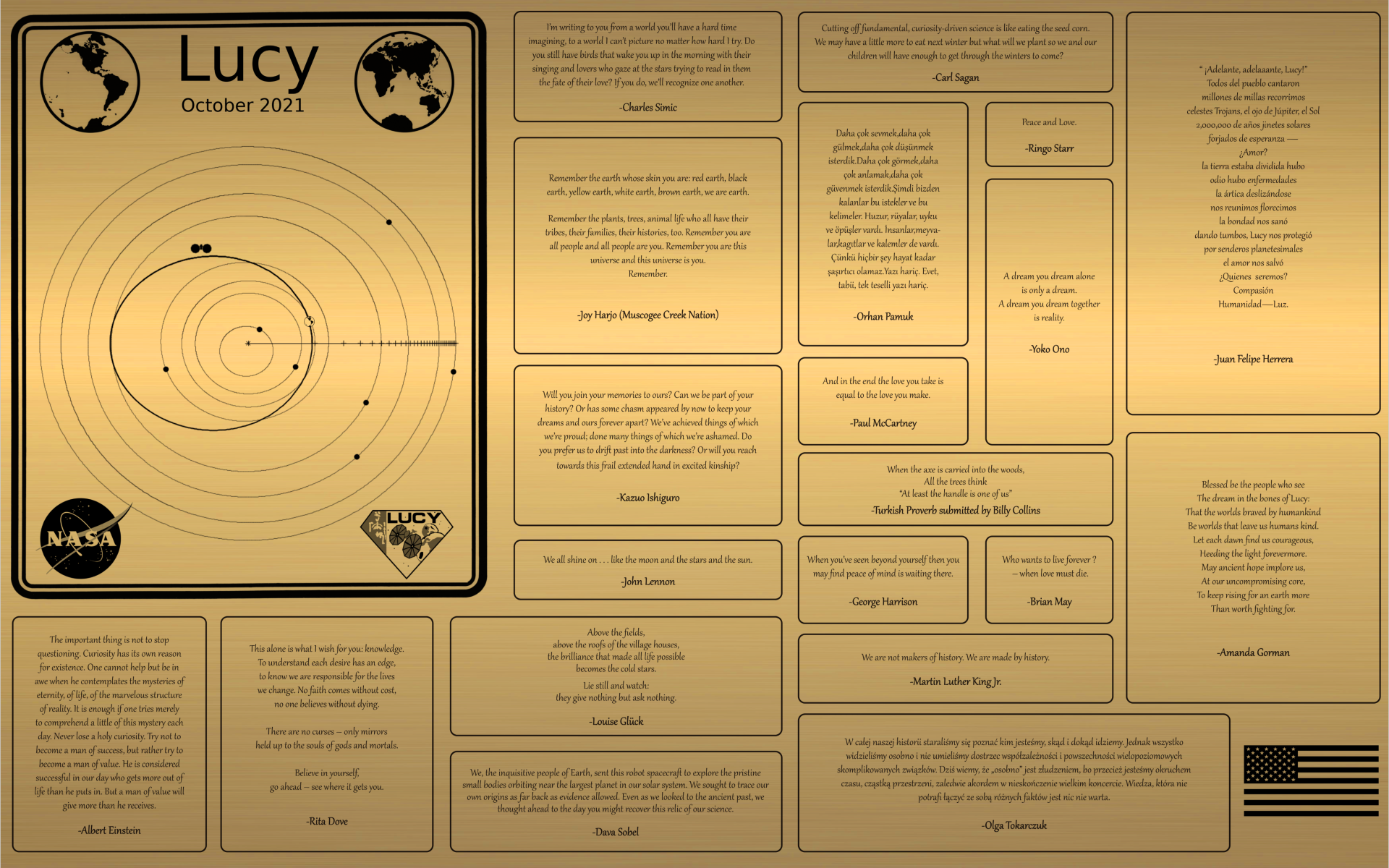
As for Lucy's fate following its March 2033 encounter of Trojan asteroids Patroclus and Meneotius — assuming the spacecraft is healthy and has residual propellant — Levison believes that there will be a call for an extended mission.
"My expectation is that somebody will make use of the spacecraft," Levison said.
Lucy is outfitted with a plaque that includes messages from prominent thinkers of our time and a diagram showing the positions of the planets on the date of Lucy's launch.
The plaque is a message to our descendants, not aliens, Levison said. "So anybody that finds it, they can figure out what time we launched." After the mission is over, he said the Lucy spacecraft will fly on a stable orbit between the Earth and the Trojan asteroids for about two million years.
Inscribed messages on the plaque include thoughts from the "Fab Four" — the Beatles. "Ringo said peace and love," Levison noted.

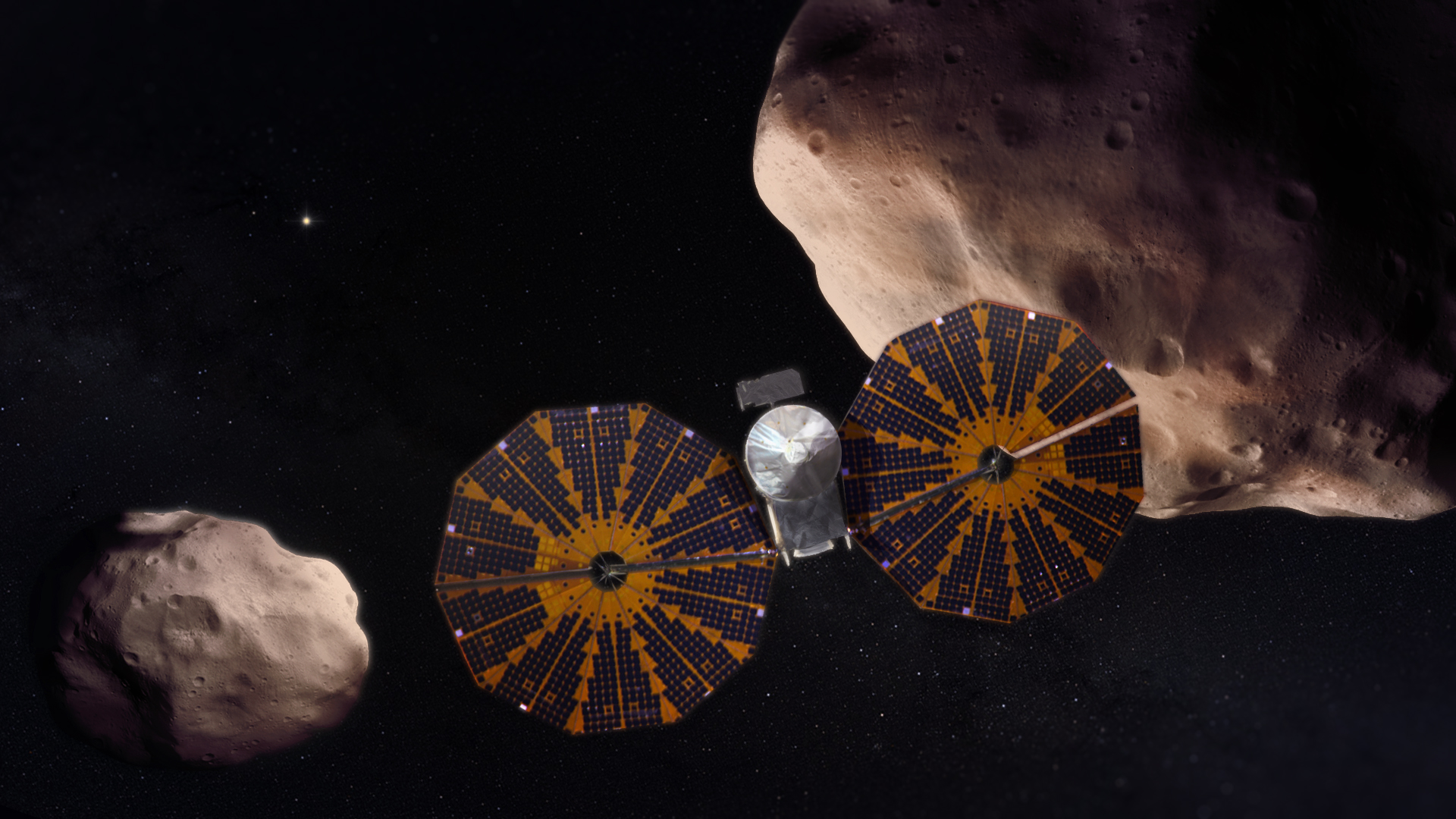

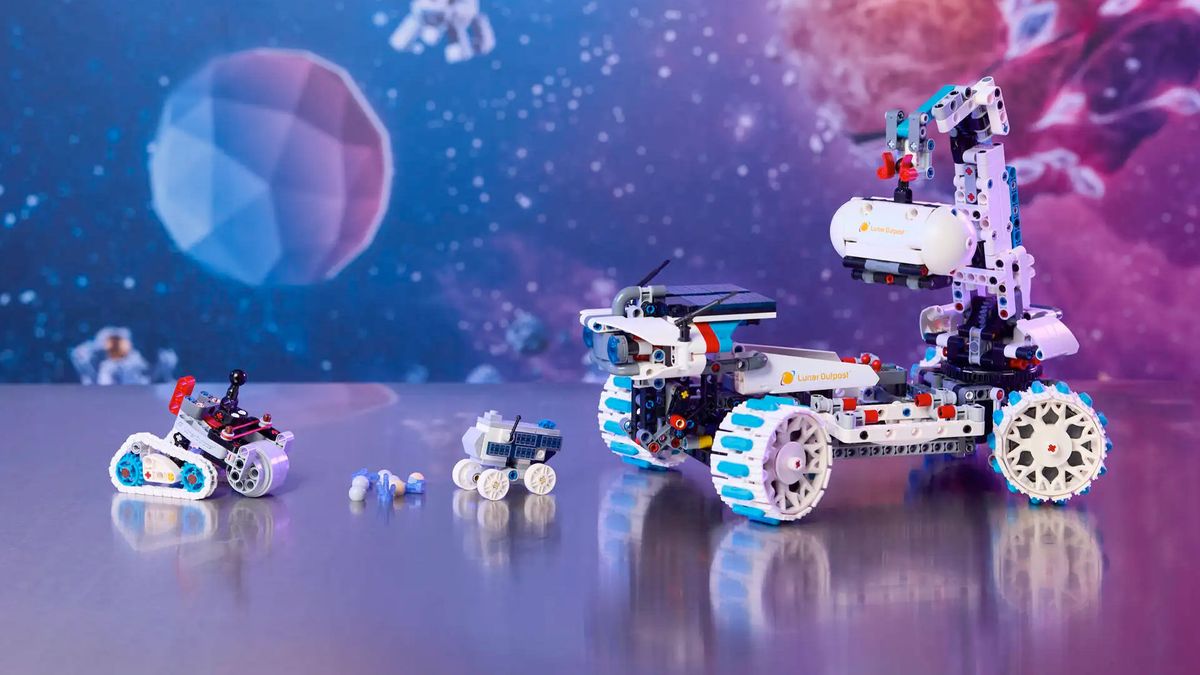





 English (US) ·
English (US) ·